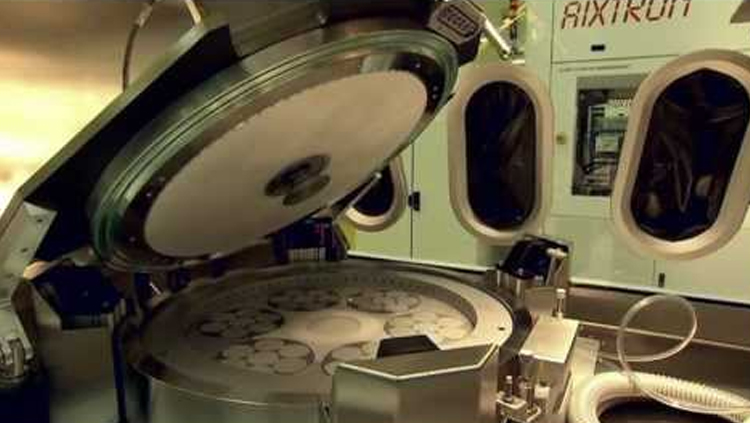InP circuits set world record in high frequency data transmission
Swedish group achieves 40Gbps data rate with 140GHz signals
![]()
Fewer cords, smaller antennas and quicker video transmission may result from a new type of microwave circuit, according to researchers at Chalmers University of Technology in Sweden. They will present their work at the 2014 IEEE Compound Semiconductor Integrated Circuits Symposium (CSICS) in San Diego tomorrow.
"We have designed circuits for signals at 140GHz, where we have a large bandwidth. In laboratory testing, we have achieved a transmission rate of 40 Gbits per second, which is twice as fast as the previous world record at a comparable frequency," says Herbert Zirath, a professor in high-speed electronics at Chalmers, who is also employed part time by Ericsson Research. The circuits are of interest to Ericsson for transmitting signals to and from base stations and cellular towers.
Every time someone watches a film clip on a phone or computer, data must travel quickly via a long series of devices, antennas and receivers. With an increasing number of users and higher demands on image quality, transmitting these growing amounts of data is posing a major challenge.
One solution is to use frequencies from 100 GHz and above, since this would give access to a larger band of empty frequencies, enabling a higher data rate. Researchers all over the world are working to produce data circuits that can transmit and receive signals that are strong enough at higher frequencies.
Zirath says that his group's circuits, which are made from InP, benefit from semiconductor materials developments that have enabled manufacture of devices that can transmit high frequency signals with sufficiently high power. The 140 GHz transmitter chip pictured above measures 1.6x1.2 mm2 and contains an I-Q modulator, a three-stage amplifier, and a x three frequency multiplier for the local oscillator. It was designed by Sona Carpenter, Herbert Zirath, and Mingquan Bao. Data-transmission measurements was done by Simon He.
"This is a very exciting area to be involved in, since the heavily increasing amount of data demands new solutions all the time. The fact that an increasing number of people are watching films wirelessly is the primary reason underlying the need for quicker transmission today," he says. "I believe it is only a matter of a couple of years before our circuits will be used in practical applications."
The project is being funded by the Swedish Foundation for Strategic Research, and the next step for the project's researchers involves moving from the laboratory to the outdoors to test the circuits under real circumstances. Even though there are many aspects that have to fall into place for successful data transmission, Herbert Zirath is not nervous. Within a few years, the goal within the project is to demonstrate wireless data transfer of 100 Gbps.


































